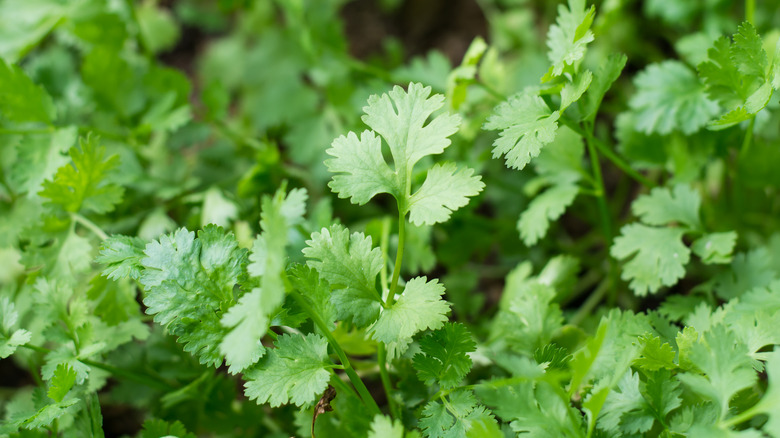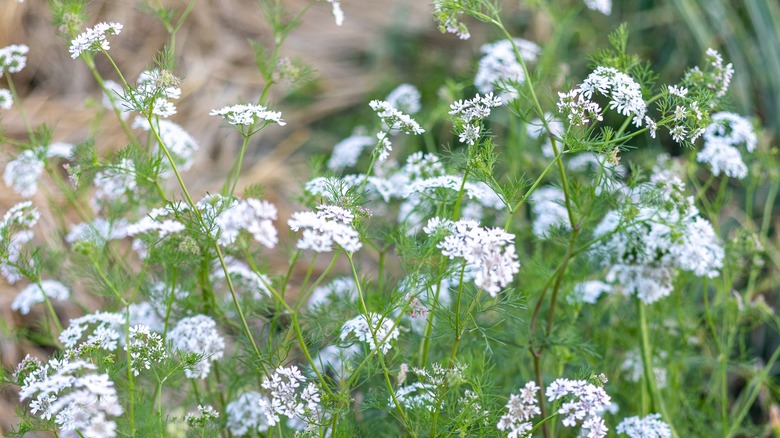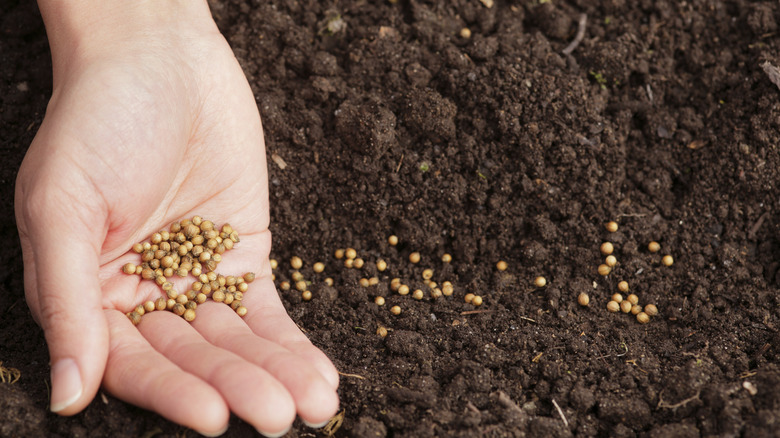Why You Should Let Your Cilantro Bolt, According To Our Master Gardener
Cilantro is a cool-season herb that makes a beautiful addition to flower gardens and grows well in a container. Unlike more woody herbs like lavender and sage, cilantro grows easily and quickly from seed, so if you're trying to save money on your herb garden, this is an excellent addition. I like to sprinkle seeds in planters and in bare spots in my flower garden in early spring. This multi-function herb looks lovely in a planter with pansies, especially once it bolts. Although your home-grown cilantro tastes bitter after it produces flowers, it still offers many benefits. These blooms become early food for pollinators and make a tasty addition to salads. They can also be left in the garden to produce seeds that become the spice coriander.
Cilantro can tolerate some heat, especially slow-bolt varieties. You can prolong the edibility of this herb by removing stems when you notice they start to grow; however, once the days grow longer and the soil warms, this aromatic annual will grow tall stalks with feathery foliage topped with delicate white flowers. As long as you know how to grow and care for your cilantro plant, you can still enjoy many benefits after it bolts.
Benefits of cilantro blooms
In the U.S., there are about 4,000 native species of bees, and some of them are very tiny. These microscopic munchers need nectar as they move pollen from one plant to another. Among their favorites are small clusters of blooms like those produced by cilantro. Perhaps the best part of supporting pollinators in this way is that you don't have to do anything. Just leave your cilantro plants alone and let Mother Nature do her job. By allowing your cilantro to bolt, you can enjoy some new tiny visitors to your garden and learn more about native bees. You will also likely attract other insects like swallowtail butterflies as well.
If you have room in your garden or landscape, sprinkling in some extra seeds to fill in the gaps will give you enough blooms to enjoy on your plate while leaving plenty for those tiny pollinators. While the plant's leaves may no longer be as tasty after it bolts, the flowers offer a mild cilantro flavor. Plus, they make your meal look pretty! Even if you don't eat them, they make a lovely garnish.
Seed production after cilantro bolts
After the flowers fade, cilantro produces small, round green seeds called coriander. These can be added to soups or salads for a burst of flavor, or you can let them dry on the plant. If you are saving seeds for planting, it's best to leave them until they are completely dry and easily fall off on their own. This will give you the best germination rates. When I'm feeling lazy, I just leave the stalks in the garden or planter to let the plants reseed. They sprout again in the fall when cooler days arrive, so I get a second crop to enjoy until the first frost.
When I want to easily save seeds for my garden for my spice cabinet or to plant elsewhere, I harvest the stalks when the seeds are dry. Then, I put the stalks seed side down in a paper bag and wrap the top with a rubber band. After shaking the bag several times, the seeds quickly come off. I place the seeds intended for my garden in small paper bags, noting the seed type and year they were harvested. Those used for cooking go in a glass jar in my pantry to keep them dry and easily accessible.


